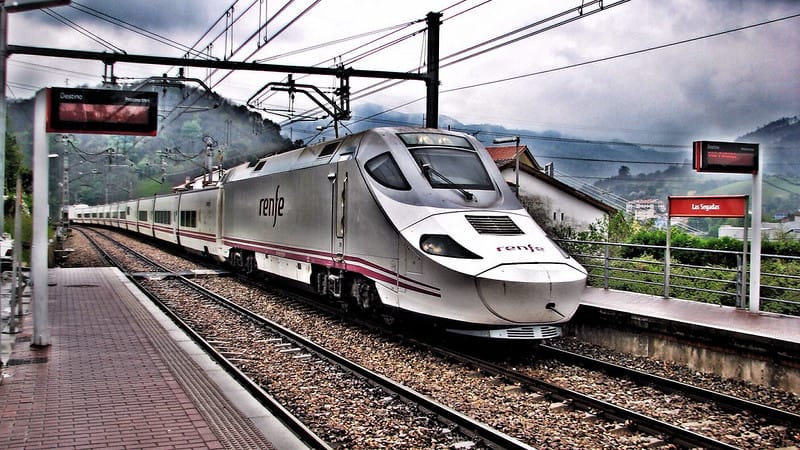
The peaks of the Pyrenees straddle the border between France and Spain. For centuries this has created a classic doorway through the mountains, the trail known as the GR1.
Hannibal and Pompey; pilgrims on the Way of St James; pedlars; sheep and cattle ranchers; Napoleon’s armies; explorers; smugglers; and a host of other people have crossed the Pyrenees.
Getting There
The Trans-Pyrenean Explorer traverses one of the world’s most spectacular mountain ranges. Its stunning scenery is unrivalled and includes spectacular canyons, waterfalls, cirques, glacial lakes and more. Its high mountain passes, rugged ridge walks and steep scree slopes demand surefootedness and a head for heights.
A hiking expedition of this kind will require a well thought-out and well-prepared pack. Ideally, your backpack should have a capacity of 60L. This will enable you to carry food for the duration of the hike, part of your tent and contingency equipment. It is a good idea to allow about 20% of your total backpack capacity to be free for items that you will not need for the entire trip, such as spare clothing or sleeping bag.
Choosing the right backpack will be dependent on your planned route and your ability to complete it within the time you have available. It is also important to bear in mind that the Pyrenees are a working mountain region and your backpack will need to be able to handle long, tough hiking days.
In addition, you will need to be able to navigate using map and compass, a skill that can take some practice. If you are not confident with this type of navigation it is a good idea to attend a mountain walking course before your expedition.
The GR10, GR11 and Pyrenean Haute Route are all well waymarked mountain paths that traverse the magnificent Pyrenees. The French GR10 from Hendaye to Banyuls-sur-Mer through the French Pyrenees in 55 stages, or the Spanish GR11 from Irun to Cap de Creus through the Spanish and Andorran Pyrenees in 47 stages, offer an exciting and varied journey across these magnificent mountains. These routes are resupply friendly with regular visits to villages and towns and accommodation options available.
If you are planning to follow the GR10, the final section of this hike is well known and features the impressive pass at Pont d’Espagne which grants some incredible views. A bus service runs from this point to the spa & ski town of Cauterets where your trip can end.
Alternatively, you can opt to end your hike in the charming Catalan village of Sort. The luckiest town in Spain! This adventure explores the northern and southern sides of Cerdanya, hiking close to the border with Andorra.
If you are short on time or unable to walk the entire route of the Trans-Pyrenean Explorer, we have a variety of tag along tours that can fit the bill. For example, our “Pyrenean Explorer 3 Frontiers” trek is a 7 day trip that allows you to hike deep into the French, Andorran and Spanish Pyrenees via little known ancient smuggler’s routes and mountain trails. This trip can easily be fitted into a two week holiday and offers the perfect introduction to this magnificent region of Europe!
The GR1
In this episode of the podcast we catch up with Trans Pyrenean Race veterans Jim and Rachel to discuss their race experiences. They talk through the grueling race that takes participants across some of the most spectacular and remote scenery in the Pyrenees Mountains, from the Bay of Biscay to San Sebastian and back again. They talk through the challenges of pacing themselves, racing on a bike that isn’t their own and how they coped with mental exhaustion.
The GR1 is an expert trail that offers hikers the chance to explore the otherworldly landscapes that inspired Salvador Dali in Cap de Creus and the region’s only national park – Aiguestortes i Estany de Sant Maurici, which is speckled with mountain lakes. The trail also weaves its way through soaring peaks and mountain pastures on its journey across northern Catalonia and Andorra. It is a challenging trek that requires surefootedness and a head for heights as it traverses rocky ridges. The trail stays high above villages and valleys and often requires a good deal of route-finding as the peaks are unmarked in many places.
As a result, the GR1 can be quite lonely, particularly in early summer when the weather may still be poor and snow is likely to be present on the higher paths. Walkers are rewarded with some of the most dramatic views in the entire Pyrenees, with the likes of the Vignemale massif and Ax 3 Domaines looming over the trail. Mobile phones are unlikely to work in much of the wilderness here and meeting other walkers is a rare event, though you will frequently encounter groups of hikers in refuges and huts.
Wildlife abounds on the GR1, with wild boar, wolves and bears all known to inhabit the area. Any half-awake walker should be able to spot their tracks or zones where the animals have grubbed up the soil in search of roots. A more elusive creature is the Pyrenean marmot, a small rodent that lives underground and only emerges to make its home in mountain caves.

